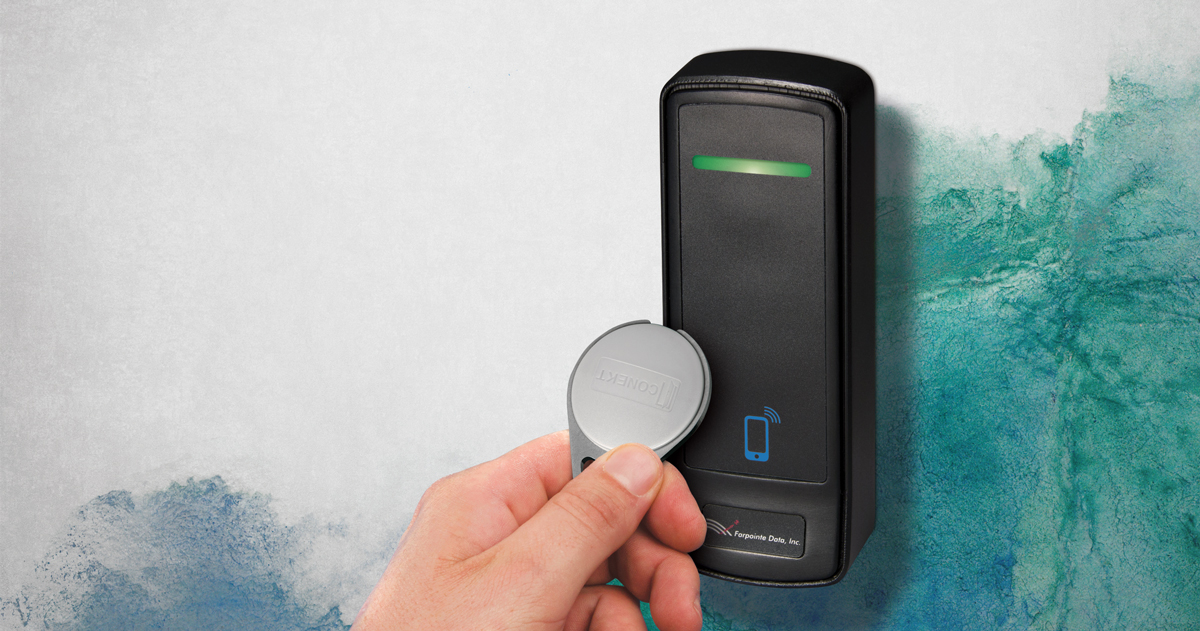
Big Security in a Small Package...
The Amazing Key Fob!
By Stephen "Shep" Sheppard, Sales Manager Key Accounts, Farpointe Data
Working in electronic access control now for more than a year or two, I’ve witnessed many changes in the devices deployed and technologies they utilize. Most recently, these include such exciting advances as mobile-ready readers and their companion smartphone-based access credentials. However, did you know that RFID key fobs, utilized for personal identification within an electronic access control system, are one of the most widely used credentials for gaining access?
To start, why the word ‘fob’? Let’s take a revealing peak back into history, circa 1653. A fob then was a small pouch for valuables. Roll forward years later to the 1800s and the term fob had gained a dual meaning: one, as the pocket used to hold a pocket watch; and two, as a small knick-knack that might be found hanging from the chain of a pocket watch. Today, a fob is widely considered to be any small ornament that hangs on a keychain.
Farpointe’s current line-up of key fobs are designed with reinforced metal eyelets, perfect for securing on a key ring. They are waterproof and shock resistant, making them ready to endure exposure to the harshest environments. (Yes, they survive the drop test!) And they are passive, requiring no battery to operate. Several fob models are available, including the somewhat ubiquitous PSK-3 125-kHz Pyramid Series Proximity® Key Ring Tag, as well as the CSK-2 CONEKT® Physical Contactless Smartcard Key Fob. Indeed, each CSK-2 employs a NXP Semiconductor MIFARE® DESFire® EV2/EV3 contactless IC, making it ideal for system integrators aiming to provide reliable, interoperable and scalable contactless solutions.
While it is true that the small size of a key fob makes it convenient to carry and use, it also leads to a number of very real limitations. For example, key fob read range is often less than that of access cards, such as clamshell and imageable ISO cards. And they can’t practically be made into picture ID badges. However, these two limitations actually make the key fob ideal for a wide range of membership-based access applications, including clubs, gyms and luxury apartments.
Consider the application of luxury apartments. Many contemporary developments are now including high-end, resident-friendly features such as designer outdoor spaces, work-from-home accommodations, gourmet communal kitchens and high-tech coworking locations with private meeting space. Access to each within the community may be discretely limited to residents-only through the issuance of security key fobs. Indeed, with contemporary apartment living we see the key fob has secured itself as a luxury status symbol!
I think it’s amazing what’s been done with the key fob! We’ve taken something that’s about the size of a quarter, securely packaged it with an embed RFID IC chip, and programmed it with unique user data that is protected with what may be the highest levels of encryption available today—all with no batteries required. It should be no surprise now why today’s fobs have become so widely used, indeed offering big security in a small package.
 Stephen "Shep" Sheppard
Stephen "Shep" Sheppard
Sales Manager Key Accounts
